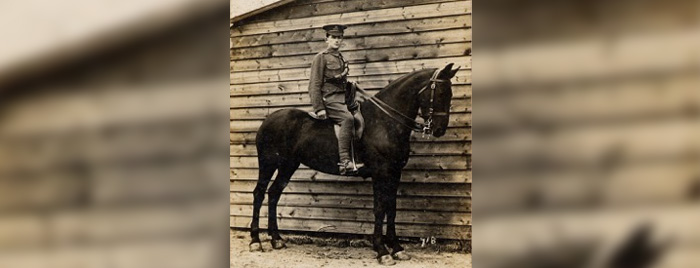Operation Warhorse by Julian Richards
The Shaftesbury & District Historical Society’s January lecturer is local archaeologist and broadcaster Julian Richards. At 2.30p.m. on Tuesday 05 January 2016 at Gold Hill Museum, Julian will be telling the real story of horses during the First World War, based on his recent excavation of an equine hospital on Salisbury Plain. This lecture is free to members and non-members may pay £3 at the door.
The Horse Artillery Gunner in the photograph is Harold Edwards [1897-1985] of Street, Somerset. His story has been archived by the Society’s Heritage Lottery Funded Great War Project, and is told in more detail in the December edition of The Byzant, the S&DHS Newsletter.



